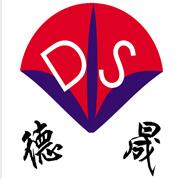- Biological buffer(21)
- Blood collection tube additives(12)
- Carbomer(2)
- trinder's reagent(9)
- Enzyme(14)
- Chemiluminescence reagent(9)
| Hubei xindesheng Material Technology Co., Ltd | |
|---|---|
| Country: | China |
| Tel: | +8618971041571 |
| E-mail: | zjing9632@gmail.com |
| QQ: | 2198447049 |
| Skype: | Chat Now! |
Can blood anticoagulants be used to separate plasma samples?
Release time: 2023-10-13
Can blood anticoagulants be used to separate plasma samples?
Whole blood includes all components of blood cells and plasma, while plasma is a light yellow translucent liquid obtained by centrifugation of whole blood with appropriate anticoagulants, usually located in the upper layer of the blood collection vessel. The difference between plasma samples and serum samples is that plasma samples contain fibrinogen, so most items used for serum testing can also be tested using plasma samples, while cellular analysis and intracellular virus detection items are more suitable for using plasma samples.
When separating plasma samples, it is necessary to use an appropriate amount of blood anticoagulant to prevent coagulation of the blood before centrifugation. At present, common blood anticoagulants on the market include heparin sodium, heparin lithium, EDTA dipotassium, tripotassium, disodium, sodium citrate, etc. Different anticoagulants have different molecular configurations and have different effects on the cell membranes of various cells in the blood. Sometimes they can increase the stability of the cell membrane, and sometimes they can damage the stability of the cell membrane.
Therefore, selecting suitable in vitro anticoagulants is crucial. When extracting plasma samples, it is recommended to use EDTA dipotassium, tripossium, disodium, or sodium citrate. This is because heparin is an inhibitor of enzyme activity, and after extracting plasma samples with heparin, it may have a certain inhibitory effect on enzyme preparations used in subsequent experiments.
Attention should be paid to extracting serum samples. Centrifuge should be carried out as soon as possible after blood collection, as the stability of the cell membrane continues to decrease after the blood leaves the human body; After the blood sample enters the blood collection vessel, it needs to be gently inverted 10 times to fully mix and fuse the blood sample with the anticoagulant in the tube; When centrifuging, it is necessary to choose the appropriate speed and time to avoid hematocrit and hemolysis caused by excessive centrifugation speed.
Hubei Xindesheng Material Technology Co., Ltd. is located in Ezhou City, Hubei Province, adjacent to Huarong District in Wuhan. It has been researching additives for blood collection vessels for nearly 20 years. Currently, in addition to anticoagulants such as heparin lithium, heparin sodium, EDTA potassium salt, etc., the products on sale also include serum separation gel, coagulant enhancer, etc. Welcome to your consultation!

